Invislaign – Chesterfield, MO
Clear Braces to Subtly Align Your Smile
You don’t have to let misaligned teeth stand between you and a healthier, more confident smile. At Yenzer Family Dental of Chesterfield, we’re proud to say that we offer Invisalign in our Chesterfield, MO dental office. This popular cosmetic braces system helps patients subtly transform their health and wellbeing around the world.
What Is Invisalign?
 Unlike traditional braces, which use unattractive metal brackets and wires to straighten teeth, Invisalign relies on discreet trays that are clear and almost invisible. When you begin your treatment, we’ll give you a series of these aligners. You’ll wear each one for 20 – 22 hours each day for about two weeks. Every time you graduate to a new aligner, your teeth get a little bit closer to where they’re supposed to be.
Unlike traditional braces, which use unattractive metal brackets and wires to straighten teeth, Invisalign relies on discreet trays that are clear and almost invisible. When you begin your treatment, we’ll give you a series of these aligners. You’ll wear each one for 20 – 22 hours each day for about two weeks. Every time you graduate to a new aligner, your teeth get a little bit closer to where they’re supposed to be.
The treatment process with Invisalign is pretty easy. It starts with a consultation in our dental office, where we’ll talk to you about your smile goals, take some X-rays, photographs, and impressions, and perhaps even show you a digital preview of what your smile might look like after Invisalign. This is the perfect opportunity to ask your dentist in Chesterfield any questions you have about the treatment.
Throughout the process, you’ll stop into our every four to six weeks or so for periodic checkups. We’ll see how your teeth are doing, provide you with new aligners, and (hopefully) listen to your positive feedback about how you’re noticing the changes in your smile.
What Are the Benefits of Invisalign?
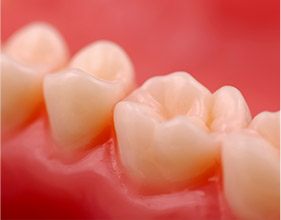 The advantages of Invisalign in Chesterfield are almost too many to list. Here are some of the most outstanding ones:
The advantages of Invisalign in Chesterfield are almost too many to list. Here are some of the most outstanding ones:
- Because the aligners are removable, you’ll never have to worry about dietary restrictions like you would with traditional braces. All you have to do is remove the aligner, enjoy your food, rinse the aligner, and replace it in your mouth.
- The removable nature of the aligners also makes it a breeze to brush and floss your teeth. There are no annoying metal brackets and wires to navigate around.
- Invisalign is more comfortable than metal braces; there are no metal bits to irritate your gums and cheeks. Many patients have also remarked that Invisalign is less painful than its old school counterpart as it moves the teeth.
- Invisalign is fast. Treatment time varies from case to case, but the average duration is about a year. You may start to notice results in just a couple of months. Traditional braces often take 18 months or longer to complete their work.
- There is a small blue compliance dot on the aligners that come with Invisalign for teens. Parents are able to keep an eye on whether their adolescents and cooperating with the treatment.
- Since Invisalign is often considered a necessary treatment, your insurance may help you to pay for it.
What Is Life Like After Invisalign?
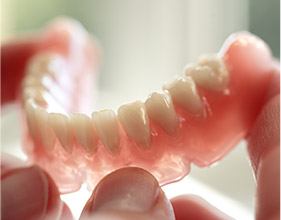 Once you’re done wearing that final aligner, you’ll come into our dental office and we’ll provide you with a retainer that will help you keep your new smile right where it belongs. If you wear it as often as you should, you can look forward to many years of benefits. Straightening your teeth will:
Once you’re done wearing that final aligner, you’ll come into our dental office and we’ll provide you with a retainer that will help you keep your new smile right where it belongs. If you wear it as often as you should, you can look forward to many years of benefits. Straightening your teeth will:
- Improve your oral health. A misaligned bite and crooked teeth can cause jaw problems and present challenges to oral hygiene. Invisalign corrects these issues.
- Boost your confidence. Crooked teeth can make you hold back from smiling, especially when you meet new people. With your straightened set of pearly whites, you probably won’t be able to stop smiling!
Would you like to know if Invisalign from your Chesterfield dentist is right for you? Please contact our dental office to schedule your consultation with Dr. Yenzer.
Who Can Invisalign Help?
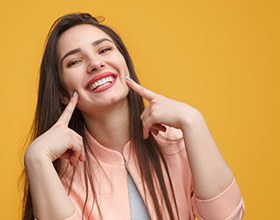
Invisalign can be a great orthodontic solution for those with orthodontic problems who would like to enjoy having a straighter, healthier, and more beautiful smile. The treatment can be used to address a range of alignment issues to make teeth easier to clean and less likely to be injured, providing a lifetime of benefits for a patient’s confidence and oral health. Here’s a brief guide to the issues Dr. Yenzer can correct with Invisalign.
Crowded Teeth
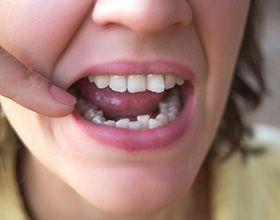
Since the teeth inevitably shift as the body develops, your teeth may become more crowded as you age. By making the teeth harder to clean, crowding can make it easier for food debris and bacteria to accumulate in hard-to-reach places. A patient with crowded teeth may experience oral health issues such as:
- Tooth decay or cavities
- Gum disease
- Jaw pain
- Trouble chewing or biting
Invisalign can reposition teeth so that they stand flush beside one another, making oral hygiene much easier while also giving the patient the confidence that comes with a straight smile.
Gaps Between Teeth
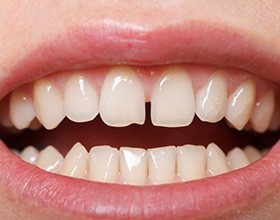
A person may develop gaps between their teeth due to the way their jaw develops or the teeth being small to begin with. Gaps can also be a result of thumb-sucking or tongue-thrusting in early childhood. In any of these cases, addressing these gaps can reduce the likelihood of plaque accumulation, tooth decay, gum disease, or gum injuries due to the tissue being unprotected. In some cases, gaps between teeth can be addressed with cosmetic services like direct bonding.
Overbite
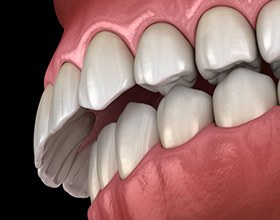
An overbite or overjet happens when the top teeth protrude too far over the lower teeth, leading to issues like jaw pain, speech issues, uneven dental wear, or problems with closing or opening the mouth. This alignment issue can also leave the top teeth exposed to injuries and infections due to them sticking out too far.
Underbite
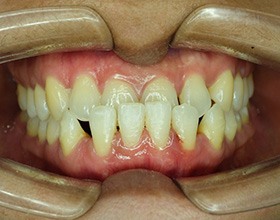
The lower teeth of a patient with an underbite will match or protrude slightly past the top row of teeth when the mouth is closed. This issue usually results from genetics, extended thumb-sucking in childhood, or oral trauma such as a tumor or a jaw injury. An untreated underbite can lead to issues such as mouth breathing, difficulty chewing or speaking, or an increased risk of sleep apnea. Treating underbites with Invisalign usually requires attachments such as rubber bands to help the clear aligners shift the teeth into better positions. While it’s usually easier to treat an underbite in a younger patient, it’s still important to treat it in adults.
Crossbite
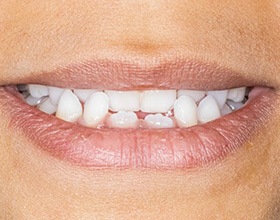
A patient with a crossbite has their lower teeth sitting slightly in front of the upper teeth, which can result from genetics, the premature loss of baby teeth, or poor oral habits. An untreated crossbite can cause long-term problems such as oral infections, jaw pain, speech problems, headaches, teeth grinding, facial asymmetry, and diminished confidence. While Invisalign can typically address this issue, it may require the use of elastics or other accessories to shift the jaw properly.
Open Bite
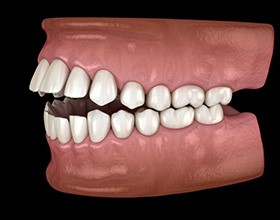
If the teeth do not overlap or touch when the mouth is closed, the patient may have an open bite. This usually results from poor bone development or prolonged non-nutritive habits like thumb-sucking during childhood. Having an open bite can make it difficult to pronounce certain words and lead to excessive wear of the enamel of the back teeth, making them easier to damage. Invisalign clear aligners can shift the top and bottom teeth so that they fit together properly, correcting the bite and reducing the likelihood of enamel erosion and dental damage.
Living with Invisalign Aligners

Prior to the arrival of your first set of aligners (or even your initial consultation), you might be wondering what living with Invisalign is actually like. The good news is that this popular orthodontic treatment is relatively hassle-free, so you likely won’t experience a huge adjustment. With that said, you can learn more on the topic below, including what you need to keep in mind when it comes to wearing and cleaning your aligners.
Wearing Your Aligners
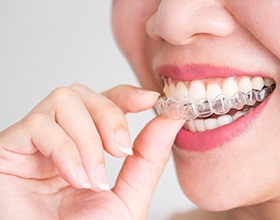
Once we create your treatment plan, we can give you an estimate of your timeline. The key to staying on track with that timeline – whether it’s 6 months or 18 months – is wearing your aligners for 20-22 hours a day. If you don’t, then your teeth won’t move as anticipated, resulting in unwanted delays. To reduce the chances of that happening to you, we recommend using the timer on your phone so you know exactly how long you’re wearing yours each day.
Cleaning Your Trays
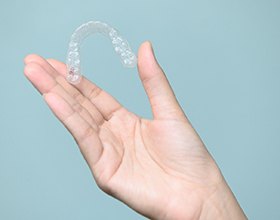
Patients often overcomplicate the process of cleaning their aligners. So, don’t feel the need to purchase denture cleaners, special toothbrushes, and other oral hygiene products. All you need is a soft-bristled toothbrush and some clean, cool water. You’ll also be given several packets of cleaning crystals in your Invisalign welcome kit, which you can use on an as-needed basis.
Eating & Drinking

Since you can remove your trays at any time, eating and drinking with Invisalign is simple! That said, there are a few things that you will need to get used to, including storing your aligners in their designated case and brushing your teeth after each meal. It’s also important that you avoid over-indulging on foods that can result in tooth decay, like gummy candies, since this can negatively impact your treatment.
Damaging a Tray

If one of your trays has a serious crack or has split into multiple pieces, it’s crucial that you call us ASAP so we can determine how to proceed. Sometimes, the only option is to have you wear your previous set until a replacement arrives. Other times, you can move onto the next set a bit early, which is usually the case if you are only a day or two away from doing so.
Note: If there is a really small, hairline crack on one of your aligners, then it’s still a good idea to give us a call.
Routine Check-Ins

Although your check-in visits aren’t as frequent with Invisalign as they are with traditional braces, each one is still extremely important. So, make sure to attend each and every one! That way, we can make sure your teeth are moving as anticipated and, if they aren’t, make some adjustments to your treatment plan with the goal of getting you back on track.
Understanding the Cost of Invisalign

Cost is always an important factor when considering orthodontic treatment. In general, the cost of Invisalign in Chesterfield varies depending on a few different factors, which we discuss below. The best way to obtain an accurate estimate is to visit our office for a complementary Invisalign consultation. During this visit, Dr. Yenzer will examine your teeth to confirm you are a good candidate, provide the cost of treatment, and discuss different payment options.
Factors that Affect the Cost of Invisalign
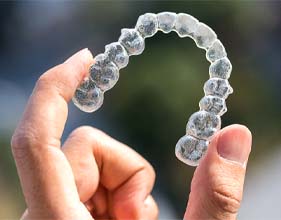
Every smile is unique, so there is no one-size-fits-all cost of Invisalign. The cost varies from person to person based on different factors, such as:
- One Arch or Both – Most people straighten their upper and lower teeth at the same time. If you only need to straighten one dental arch, your costs will likely be lower than average.
- Complexity – Simple tooth movements like closing a single gap typically cost less than straightening multiple crooked teeth.
- Length of Treatment – Longer treatments require more aligners and thus carry a higher cost.
Invisalign vs. Smile Direct Club™: Which Costs More?
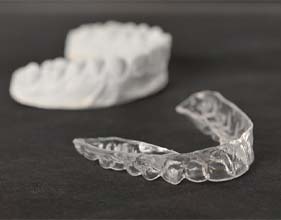
Many patients ask us about the difference between Invisalign and DIY clear aligner treatments, such as Smile Direct Club™. We understand that DIY aligner systems can seem attractive, especially due to their lower costs. While Invisalign in Chesterfield usually costs anywhere from $3,000 to $8,000, DIY aligners usually cost closer to $2,000.
However, it is important to remember that you get what you pay for. Here are a few key differences between Invisalign and DIY aligners:
- Invisalign uses a patented biocompatible material that is designed for comfort and efficient tooth movements. One reason DIY aligners cost less is because they are often made out of cheap plastic.
- With Invisalign, you enjoy the personalized support and instruction from an experienced dental team. With DIY aligners, you have to make impressions and follow the treatment process without close professional supervision.
- You can trust in the Invisalign process, which has been used by over 11 million people worldwide. If something goes wrong with your DIY aligners, you may end up having to pay a professional to fix any issues.
Does Dental Insurance Cover Invisalign?
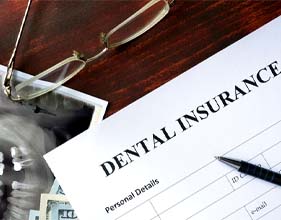
Most insurance plans do not include coverage for traditional orthodontic treatment or Invisalign clear braces. However, every plan is slightly different! If you are interested in straightening your smile, be sure to confirm your orthodontic coverage with your insurance provider. If you need help navigating the details of your insurance, our experienced team will be happy to guide you. We always strive to help patients understand and maximize their insurance benefits. Finally, if you have a Flexible Spending Account (FSA) through your employer, you can likely use those funds to help cover the cost of Invisalign.
Options for Making Invisalign Affordable
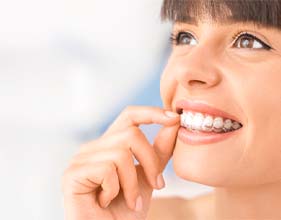
At Yenzer Family Dental, we are dedicated to helping our patients achieve their smile goals without busting their budgets. That is why we created our Smile Advantage dental savings plan, which unlocks affordable oral care for uninsured or underinsured patients. For just one low annual fee, you can access comprehensive preventive services for a year and significant discounts on many others. No deductibles, waiting periods, or annual maximums!
We also offer convenient dental financing through CareCredit. A trusted partner, CareCredit provides custom monthly payment plans for Invisalign and other major dental treatments. By splitting of the cost of Invisalign into smaller, more convenient chunks, you can straighten your teeth without financial stress.
If you are ready to achieve the straight smile you have always wanted, we can help! Contact our office today to schedule a consultation with Dr. Yenzer, an experienced Invisalign dentist in Chesterfield.
Invisalign Teen
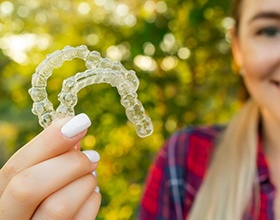
Teenagers can be quite image-conscious, which can make them reluctant to commit to such conspicuous and irremovable orthodontic appliances as traditional metal braces. Thankfully, Invisalign Teen offers an alternative treatment that uses removable and virtually invisible clear aligners. This process can gradually shift a teen’s teeth into healthier positions without significantly affecting their appearance or requiring any irksome dietary restrictions. If you’re interested in what Invisalign Teen may be able to do for your teenager, contact our office in Chesterfield to book a consultation.
How Is Invisalign Teen Different?
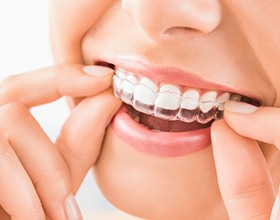
Invisalign Teen uses clear aligners with little blue dots that gradually fade over a two-week period, thereby letting the teenage patient know when it’s time to switch to the next set. It also includes unlimited replacement aligners in case any become lost or broken. Other than that, it is basically the same thing as Invisalign for adults. The process begins with a consultation, allowing your teen to discuss the goals of the treatment as well as the pros and cons of Invisalign vs. traditional braces with Dr. Yenzer. Your teen will then have their teeth scanned to provide measurements for their clear aligners. Each set of aligners is designed to be worn for usually about two weeks, and your teen will need to come back to our office every six to eight weeks for checkups.
Is Invisalign Right for Your Teen?
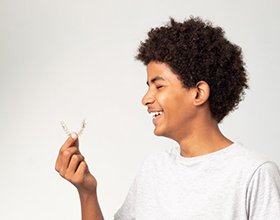
For your teen to achieve their desired results, they will need to strictly comply with the treatment, so Invisalign Teen might be better than traditional braces for teens who are more responsible and less forgetful. Invisalign clear aligners are virtually invisible, making them great for teens who are conscious about their image, and they are made from smooth plastic, making them fantastic for adolescents with lower thresholds for discomfort. However, Invisalign Teen may not be appropriate for teens who have complex or severe orthodontic issues that can be better treated with traditional braces. The only way to find out if your adolescent is a suitable candidate for Invisalign Teen is to bring them in for a consultation at our office in Chesterfield.
The Benefits of Invisalign Teen

Invisalign Teen offers several benefits that can make the treatment a good fit for adolescents, including:
- Removable aligners are ideal for teens who are in band or who need to wear a mouthguard for sports.
- Since the aligners are nearly invisible, teens wearing them can have an easier time socializing with their peers.
- Invisalign Teen requires an easier oral hygiene routine than traditional braces since it does not involve brushing or flossing around wires and brackets.
- Brief checkup appointments mean that your teen won’t have to miss a lot of school.
Invisalign Frequently Asked Questions
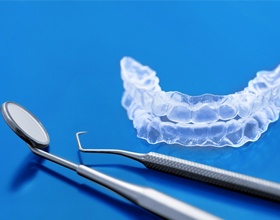
Wondering whether Invisalign in Chesterfield is right for you? It’s important that you do your homework and gather all of the facts before you commit yourself to any kind of orthodontic process. Schedule a consultation with us; we’ll address any concerns you might have and help you figure out the best path towards a better smile. To get you started, here are the answers to just a few of the questions that patients often ask about this treatment.
What Can Invisalign Correct?
The most commonly known use for Invisalign is to straighten crooked teeth, but there are several other orthodontic issues it can treat as well. For example, bite problems where the upper and lower teeth don’t line up properly (overbite, underbite and crossbite) can often be corrected. You might also be able to use Invisalign to correct spacing issues between your teeth, whether they’re too far apart or crowded together. Depending on the severity of the case, though, sometimes traditional orthodontics might be a better option. During your consultation, your dentist in Chesterfield will examine the state of your oral health to decide whether Invisalign would be effective.
How Can I Keep Invisalign Clean?
It’s important to protect your oral health by keeping your aligners clean. Rinse them whenever you take them out of your mouth to get rid of any plaque or dried-on saliva. You should also periodically soak them in denture cleaner and thoroughly clean them with a clear anti-bacterial soft soap.
Because Invisalign aligners are form fitted to your mouth, it’s easy for them to accidentally trap particles against your teeth, so don’t forget to keep brushing and flossing on a regular basis. You can brush your aligners as well; just don’t use toothpaste to do so, or you might damage them!
How Old Do You Need to Be to Get Invisalign?
Like other orthodontic treatments, Invisalign usually works best after all the permanent teeth have erupted, which usually happens by the ages of twelve or thirteen. However, the ability to be responsible with the aligners also must be taken into account; if a patient keeps taking them out unnecessarily or forgets to put them back in, it could lengthen treatment time. For this reason, Invisalign is usually recommended for teenagers and adults who already have all their permanent teeth and are disciplined enough to help ensure the treatment’s success.
Will Invisalign Hurt?
When you first get your aligners, you might feel some pressure on your teeth. This is completely normal, of course; the whole point of Invisalign is to gradually move the teeth into place. This will go away after a few days, though you might experience some new pressure once you move on to the next aligner.
You might also notice that the aligners irritate your gums and the inside of your lips at first, but this is also temporary. Your mouth will eventually develop callouses to protect itself, and at that point the discomfort will fade.

